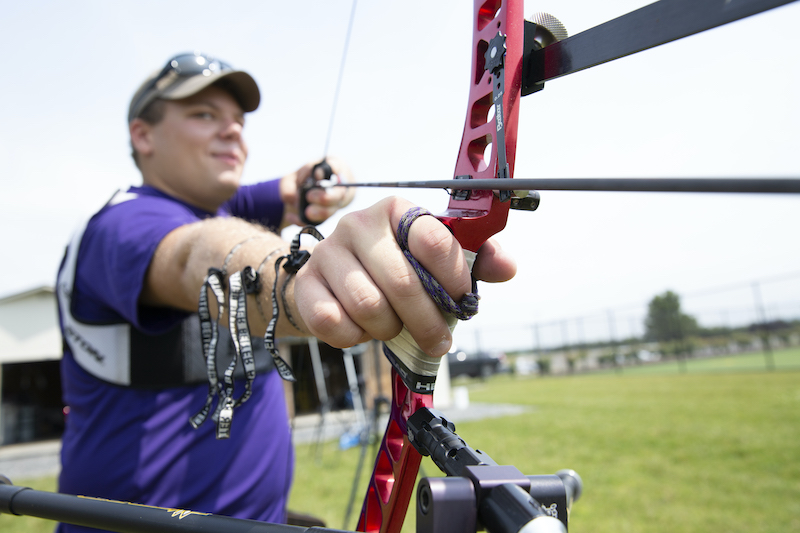Only a few things touch the arrow during a shot: the string, the plunger and the arrow rest. When you’re shooting a recurve bow, the type of arrow rest you choose will be determined primarily by the type of arrows you use. This can vary between bows that are used only outdoors (skinny arrows), only indoors (fat arrows), or a combination of both if you have only one bow.
These considerations may not apply very much to beginners, making a simpler arrow rest the best choice. This could be the rest that’s included with Hoyt risers that has come to be known as the Hoyt Super Rest. It’s a white plastic stick-on rest that costs about $2 retail if you want to buy it separately. This simple rest has no adjustment to the arm that holds the arrow, so it’s a “set it and forget it” rest. Just remember that wherever you stick it on your bow is where it has to stay. Prying the rest off will likely break it, and then you’ll have to replace it. As a result, it’s probably best for a beginner to have a more seasoned archer install this arrow rest, to avoid mistakes.
When it comes to more advanced arrow rests, there are two predominant styles on the market: stick-on and wrap-around. Stick-on rests simply adhere to the riser on the shelf side of the bow, and wrap-around rests have a “plate” that you affix under the collar of the plunger on the sight-mounting side of the bow. Stick-on rests have a simpler design with fewer moving parts, and they are lighter in mass weight. With wrap-around rests, nothing gets stuck on to the riser, and some models are micro-adjustable.

Both of these types of rests will likely be adjustable at the arm (the wire that holds your arrow). You can make those adjustments in the vertical direction and in the “sweep angle” of the arm. The vertical adjustment accounts for where you’d like your arrow to contact the plunger; in general, archers want the arrow to touch the plunger directly in the middle of the plunger tip. You make this vertical adjustment depending on the diameter of your arrow. Then, you’ll need to shift the arrow rest arm to accommodate the thickness of the arrow, and this is where you will have to adjust the angle at which the arm “sweeps” away from the riser; the greater the arrow diameter, the greater the angle.
Top-of-the-line arrow rests to consider include the Shibuya Ultima (a stick-on model) and the AAE Free Flyte (a wrap-around).
Choosing the best arrow rest for you is one of the steps in hand-picking the best equipment for your personal setup. Having the utmost confidence in your equipment leads to more confidence in your shooting. Visit a local archery shop to find that perfect piece of equipment. From there, all you have to do is practice.











































